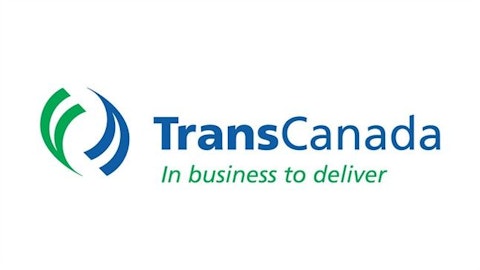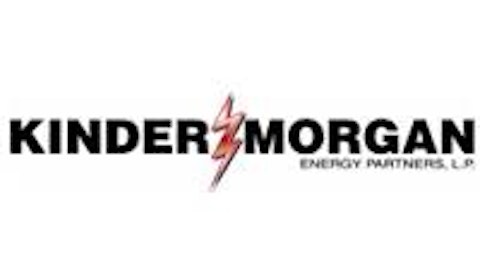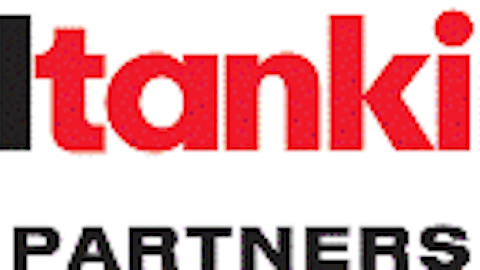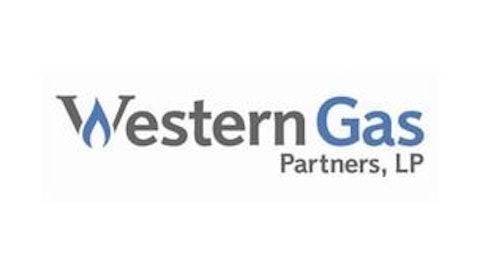A trailblazing North American energy transportation and distribution company, Enbridge Inc (NYSE:ENB) , has been trounced year to date, declining 4.99% compared to the 12.42% return offered by the blue chip average.
Enbridge transports and distributes energy across the United States and Canada. Operating a crude oil and liquids transportation system, Enbridge Inc (NYSE:ENB) is additionally operating in the natural gas transmission and midstream businesses. Liquids pipelines, gas distribution, gas pipelines, processing and energy services, sponsored investments, and corporate are the company’s main five segments. Fundamentally, the company’s business model is slightly profitable, with a profit margin of 2.73% over the past 12 months.
With the company trading within $7 of all-time highs, should investors pour into this company, or should they look elsewhere for black gold?

Strengths
- Steady revenue growth: In 2007, Enbridge reported revenue of $11.91 billion; in 2012, the company announced revenue of $25.44 billion, representing year-over-year annual growth of 16.39%, a trend which is anticipated to reverse into the future with projections placing 2014 revenue at $25.34 billion. (The growth from 2007 to 2012 was a result of solid performance in all of their major segments except for corporate.)

- Positive free cash flow: Currently, Enbridge Inc (NYSE:ENB) possesses a free-cash-flow position of $422.99 million, allowing the company to reward shareholders through their 3.03% yielding dividend or reinvest in their business.
- Established distribution network: North America is riddled with assets of the company, stretching from the Gulf of Mexico to Northern Canada, with $45.74 billion in total assets as of the third quarter of 2012, and the established distribution network the company possesses. This provides an increased level of security and predictability for investors.

Weaknesses
- Net debt position: Despite possessing $425.04 million of cash and cash equivalents on their balance sheets, Enbridge’s debt load of $15.39 billion results in a rather substantial debt position of $14.96 billion. (Much of this debt has been accumulated at historically low borrowing rates to finance strategic expansion projects.)

Opportunities
- Meeting growing energy demand: According to the US Energy Information Administration, global energy demand will grow from 352.4 quadrillion Btu in 2011 to 416.0 quadrillion Btu in 2020, presenting the opportunity for Enbridge Inc (NYSE:ENB) to meet growing energy demand. And with growing energy demand probable, strength in energy prices is likely, possibly leading to margin expansion as Enbridge may be able to charge more to transport every gallon.

- Dividend growth: Since implementing its dividend program in 1952, Enbridge Inc (NYSE:ENB) has consistently raised its dividend payouts, and is widely anticipated to sustain this trend well into the future.

- Expansion projects: In 2011, the company had more than $13 billion in commercially secure projects, and as of the end of that year had identified $48 billion in individual projects for development between 2011 and 2020. Any expansion projects could present substantial opportunity to the company. (A major area of opportunity is the Bakken Region, where the company is expanding its crude-oil transportation systems.)
- Renewable energy investment: In 2011, Enbridge continued its policy of strong investment in renewable energy, placing into service about 370 MW of new wind and solar generating capacity, and as of the end of the year, the company has interest in roughly 1,000 MW of renewable and alternate energy projects, including eight wind farms, three solar farms, a geothermal facility, four waste heat recovery facilities, and a fuel-cell power plant.
Threats
- Government regulation: Any government regulation that restricts the ability of Enbridge Inc (NYSE:ENB) to expand efficiently could severely hurt the company, as just recently a major Keystone pipeline project was rejected.





